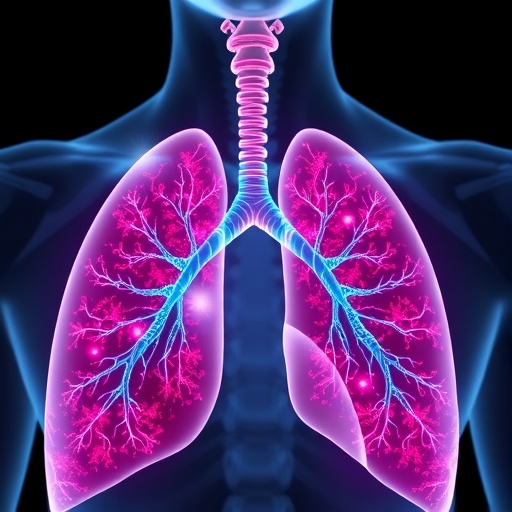Lung-MAP: Revolutionizing Precision Medicine in Advanced Non-Small Cell Lung Cancer
Precision medicine has taken a significant leap forward in the fight against advanced non-small cell lung cancer (NSCLC) with the evolution of the Lung Cancer Master Protocol (Lung-MAP). Originally launched in 2014 as one of the earliest umbrella trials, Lung-MAP has continuously adapted to emerging technologies and shifting clinical paradigms to provide patients with targeted treatments based on their tumor’s unique genomic profile. Now entering its third phase, Lung-MAP 3.0 promises unprecedented flexibility and accessibility, reshaping how oncologists and researchers approach clinical trials in NSCLC.
At its core, Lung-MAP epitomizes a precision oncology platform that harnesses next-generation sequencing (NGS) technologies to identify actionable genetic mutations in tumor samples. Unlike traditional clinical trials that often test a single drug or regimen in a narrowly defined patient population, Lung-MAP employs a master protocol design that allows multiple investigational agents to be tested simultaneously in sub-studies matched to specific genomic alterations. This trial format not only accelerates the pace of drug development but streamlines patient enrollment, making cutting-edge therapies available to a broader demographic of lung cancer patients.
The latest iteration, Lung-MAP 3.0, represents a profound expansion in the trial’s genomic testing framework. Historically, Lung-MAP’s genomic screening was largely centralized through the Foundation Medicine platform, providing a standardized approach but limiting flexibility for patients and providers. With the urgent need to bridge real-world clinical practices and trial protocols, Lung-MAP 3.0 has embraced a diversity of commercial and academic NGS platforms. More than 40 different genomic testing services are now approved to contribute biomarker data for patient matching, a list that is expected to continue growing as the trial’s infrastructure evolves.
This paradigm shift dramatically reduces the procedural and logistical hurdles faced by participating sites and patients. Previously, trial enrollment frequently required fresh tumor biopsies or new blood samples, procedures often invasive and delay-prone. By allowing the use of existing NGS results obtained in routine clinical care, Lung-MAP 3.0 removes significant barriers to participation. This pragmatic approach empowers smaller community oncology practices—where most NSCLC patients receive treatment—to seamlessly integrate trial screening into standard workflows without the burdens of additional sample collection or expensive in-house genomic profiling.
Lung-MAP’s updated screening methodology leverages advanced bioinformatics pipelines capable of harmonizing data from a variety of NGS platforms, ensuring consistent and reliable biomarker identification. This includes detecting driver mutations, copy number variations, gene rearrangements, and emerging biomarkers that inform eligibility for targeted therapies or immunotherapy combinations. The endpoint of this screening process is precise patient stratification that aligns with the trial’s multiple sub-studies—each investigating novel agents or drug combinations against specific molecular targets.
Such innovation reflects Lung-MAP’s leadership in tackling one of the greatest challenges in oncology clinical research: ensuring trial populations truly mirror the heterogeneity of real-world patients. By facilitating enrollment across nearly 900 clinical sites in the U.S., including community hospitals and smaller clinics, Lung-MAP 3.0 increases accessibility for underrepresented groups geographically, socioeconomically, and demographically. This inclusive recruitment is vital to generating robust efficacy data and understanding differential drug responses across varying patient subsets.
The Lung-MAP trial’s origins trace back to a focus on patients with advanced squamous-cell NSCLC. However, its second-generation expansion in 2019 opened doors to individuals with non-squamous NSCLC, thereby encompassing the majority of lung cancer subtypes. This broadened inclusion criteria exemplifies the trial’s dynamic design — a feature that remains at the forefront in Lung-MAP 3.0, which continuously refines the master protocol to incorporate new therapeutic advances and biomarker discoveries in real-time.
Underlying Lung-MAP’s success is a powerful consortium of stakeholder partners including the National Cancer Institute (NCI), SWOG Cancer Research Network, Friends of Cancer Research, and the Foundation for the National Institutes of Health (FNIH). These organizations facilitate public-private collaborations that combine diverse expertise, funding, and drug development capabilities, ensuring that promising agents move rapidly through the clinical pipeline. To date, Lung-MAP has engaged 15 pharmaceutical collaborators, launched 19 sub-studies, and screened more than 5,000 patients—setting new standards for partnership-driven oncology research.
From a technical perspective, a hallmark of Lung-MAP’s innovative trial design is the seamless incorporation of immunotherapy regimens alongside targeted therapies. By addressing current scientific questions related to immunotherapy combinations’ efficacy and identifying predictive biomarkers of response or resistance, Lung-MAP contributes critical knowledge that will shape next-generation treatment strategies for NSCLC. This includes evaluating emerging markers beyond PD-L1 expression, such as tumor mutational burden and gene expression profiles, further personalizing therapy and improving patient outcomes.
Finally, patient-centered considerations are integral to Lung-MAP’s mission. The no-cost genomic testing option for patients without existing NGS data ensures that financial obstacles do not preclude participation in state-of-the-art therapeutic trials. Additionally, educational webinars and advocacy initiatives enhance patient engagement and transparency, fostering trust between investigators and the lung cancer community. Such measures help democratize trial access and address disparities in clinical research.
Lung-MAP’s journey over the past decade illustrates the transformative potential of master protocols in oncology. By marrying technological sophistication, collaborative frameworks, and pragmatic clinical integration, Lung-MAP 3.0 stands as a beacon of hope for patients battling advanced NSCLC. Its innovative model offers a blueprint for future precision medicine initiatives, aiming to accelerate drug approvals, optimize patient benefit, and ultimately change the landscape of lung cancer treatment.
Subject of Research: People
Article Title: Lung-MAP: Revolutionizing Precision Medicine in Advanced Non-Small Cell Lung Cancer
News Publication Date: Not specified in original content
Web References:
- https://friendsofcancerresearch.org/event/lung-map-webinar-advocating-accelerating-and-amplifying-lung-cancer-discovery/
- https://fnih.org/
- http://www.focr.org/
- https://swog.org/
Keywords:
Lung cancer, Cancer patients, Clinical trials, Cancer research, Cancer genome sequencing




